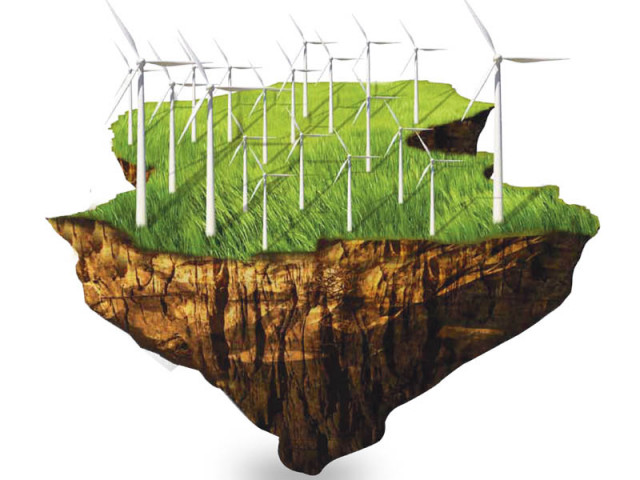Wind power: The whir of turbines to come
Govt has allotted a total of around 39,000 acres to all projects, biggest of which involves NBT Wind Energy Pakistan.

Wind power: The whir of turbines to come
Without incentives from the government, alternative energy in Pakistan has been costly and hence elusive. But all of this might change soon with wind power – about 30 projects are in progress and have the potential to add 1,800 megawatts (MW) to the national grid. Around half of them are expected to be completed by next June.
A total of around 39,000 acres have been allotted to all the projects, the biggest of which involves NBT Wind Energy Pakistan, a Norway-based company, and Malakoff, a company based in Malaysia. They have been allotted around 908 acres by the Sindh government and their wind turbines will be spread over 12,000 acres.
The expected completion date of the project, which is being touted as the largest wind farm in Asia, is December 2013. It costs $1.2 million per MW, and since it has the potential to generate 500MW, the total comes out to $600 million. Two other projects, which will add 50MW to the grid by next year, belong to the Pakistan Army through the Fauji Fertilizer Company.
Previous wind mapping projects have concluded that 3 per cent of Pakistan’s land area is ‘Class 4+’, which means that it is excellent for utility scale applications of wind power. If all of this space is used, an additional 132,000 MW can be generated. The UNDP as well as National Renewable Energy Laboratory have also identified wind corridors spanning up to 180 kilometers in Pakistan.
For wind power projects, the government has set a rate of return of 17 per cent for investors, with a tariff of 14.6 cents per kilowatt-hour. The head of the Sindh Board of Investment, Zubair Motiwalla, thinks this is a generous offer. “Around 30 investors, including one of the biggest energy companies in the world, have already expressed their interest,” he said at his office in the Finance and Trade Centre. “There is a five-year payback period, and then you can start adjusting the price.”
He added that the National Transmission and Dispatch Company’s (NTDC) grids need to be upgraded. It can take four to five years for transmission lines to be laid, but Motiwalla says that they are already available and NTDC has already given access to them.
However, wind energy is an intermittent power source dependent entirely on the whims of Mother Nature. It cannot be switched on or off the way gas, oil, or hydropower can be, and unlike solar power, energy storage is not an option with wind power. Therefore NTDC will need to compensate for any sudden losses in power to the grid.
When asked if the national grid is in shape to compensate for power losses, Motiwalla said, “That is not a headache for us or our investors – it is a problem for the NTDC to worry about.” He also feels that renewable energy will be able to tackle the circular debt issue plaguing the Sui Southern Gas Company, Karachi Electric Supply Company and the other utility services.
Many projects that were started in previous years never got off the ground. The director of administration at the Sindh Board of Investment, Zubair Channa, explains that this was because they were never given incentives or guarantees. “But now, if the projects that are expected to be completed by next June don’t get finished on time, the project’s guarantees, which are $300,000 per MW, will be forfeited.”
Channa warned that people shouldn’t erroneously assume that if these projects start running, another 1,800MW will be added to the grid. He said that even during a good wind season, the average production capacity usually falls by around 40 to 50 per cent and in October through December, the wind drops so drastically that it can barely produce anything. But Channa said that Pakistan is fortunate to have the best winds in the summer, which coincides with the peak demand for electricity.
The best wind corridors out of those identified in southern Pakistan stretch from Hyderabad to Gharo, the coastal areas south of Karachi and the hills and ridges between Karachi and Hyderabad.
But one obstacle that may come in the way of wind power is traditional energy providers, who may view renewable energy as a threat. “There will always be opposition [to renewable energy] and oil lobbies are out there. We can feel them coming but the odds are being overcome,” said Motiwalla.
Published in The Express Tribune, August 6th, 2012.



















COMMENTS
Comments are moderated and generally will be posted if they are on-topic and not abusive.
For more information, please see our Comments FAQ